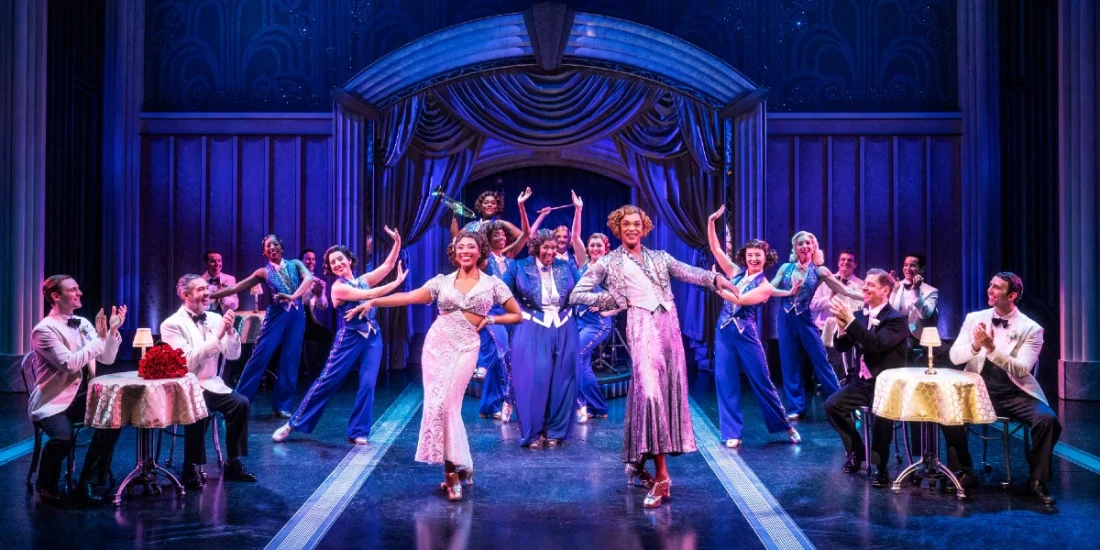Costume designer Gregg Barnes on fashioning the 1930s in 'Some Like It Hot'
Costume designer Gregg Barnes talks about the extensive process of sourcing vintage costume pieces for the Broadway musical, which received 13 Tony nominations.
Designing costume pieces for a big, brassy musical with a 26-person ensemble is a tall order. Sourcing vintage pieces for a 1930s show spanning multiple seasons and locations, from winter in Chicago to summer in Tijuana, is another level of challenge. Costume designer Gregg Barnes was up to the task with Some Like It Hot, and his colorful, authentic design garnered a 2023 Tony nomination — one of the musical’s 13 nods, the most of any show this season. His work on the musical already won him the Outer Critics Circle Award for Outstanding Costume Design.
“Doing what I do, people see the frosting, but really, you have to bake the cake first,” said Barnes. “How do we get from A to B? And how do we fit it into the budget? How do we serve the story?”
The Some Like It Hot musical, based on the same-named 1959 film, starts in Prohibition-era Chicago and follows two jazz musicians, Joe (Christian Borle) and Jerry (J. Harrison Ghee). When the duo witnesses a mob crime, they flee in disguise as part of an all-female swing band called Sweet Sue and Her Society Syncopators.

The musical takes audiences on a journey from a Chicago nightclub on a cross-country train ride to San Diego, and there are a lot of frills, furs, and fedoras on the way. The costume design process “was complicated, but in a good way, by the fact that we wanted to put as much vintage [on stage] so that the heart of it was actually rooted in real things people would associate as being from the ‘30s,” said Barnes.
The 1930s decade, “in many ways, is the standard of elegance,” said Barnes. But sourcing authentic period clothing is labor-intensive and involves lots of research. For his part, Barnes grappled with several questions about the integrity and value of vintage wear. “Is it going to hold up? Is anybody even going to care?” recalled Barnes.
The hardest part of the research process was finding inspiration for everyday wear for the African American characters. “There's a lot [of photos] in the ‘20s, there's a lot in the ‘40s,” said Barnes. “But in the ‘30s, except for the Harlem Renaissance… I had a terrible time finding just folks on the train. It speaks to the time — it speaks to many things.” As such, costumes inspired by the Harlem Renaissance research take center stage with glittering, bias-cut dresses and cloche hats.
The end result of all his research was worth the effort. “It’s a lot of paperwork to keep it in order, but I have an amazing team!” Barnes said.

Some Like It Hot marks Barnes’s ninth Tony nomination — he won for The Drowsy Chaperone and Follies — but it isn’t old hat. “I’m always surprised,” said Barnes of his nominations. He’s heartened to see that a younger generation is coming up in the theatre design community, but that there’s still space where the “older generation can still flourish.”
Throughout Barnes’s decades-long career, he’s learned that the collaborative efforts of an enthusiastic cast and crew are more important than accolades. The silver bullet, though, is when the two collide, like in Some Like It Hot.
“It's the team — that is what's important because if it's something that really has your heart, but it's with the wrong family, it's a double letdown,” said Barnes. “When it's with the right people, it can be a joy ride for the entire journey.”
Originally published on
